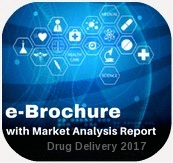
Maslov M Y
Tufts University School of Medicine, USA
Title: Myocardial drug distribution following epicardial drug delivery: Potential impact of cardiac capillary perfusion in a swine model
Biography
Biography: Maslov M Y
Abstract
Statement of the Problem: Optimal therapeutic concentrations of antiarrhythmic, inotropic, angiogenic and regenerative agents in the heart can exceed the toxic threshold for other organs. Local epicardial drug delivery (LEDD) to the left ventricle aims to overcome this limitation. However, the global myocardial drug distribution following LEDD is vague. Myocardial drug distribution following LEDD is governed by diffusive, convective forces, and blood flow. We aimed to characterize the three-dimensional (transmural, longitudinal and circumferential) myocardial pharmacokinetics by site-specific point-source and distributed-source release of epinephrine, a model small hydrophilic drug, to the epicardial surface in a large animal model.
Methodology & Theoretical Orientation: A living swine model was used to evaluate epinephrine deposition and distribution in the heart following LEDD using biocompatible polymeric point-source release and alternatively distributed-source release.
Findings: LEDD via point-source release, and to a greater extent via distributed-source release, generated transmural epinephrine gradients directly beneath the site of application, longitudinally down the length of the heart and around the circumference toward the lateral and inferior walls, but not towards the interventricular septum. In both cases these gradients extended further than might be predicted from simple diffusion. Drug distribution away from the release source, down the axis of the left ventricle, and selectively towards the left heart follows the direction of capillary perfusion away from the anterior descending and circumflex arteries, suggesting a role for the coronary circulation in myocardial drug deposition and clearance. The role of the coronary vasculature is further suggested by the elevated drug levels in the coronary sinus effluent.
Conclusions: The coronary vasculature significantly shapes the distribution within the myocardium following LEDD in large animal models. Optimal design of epicardial drug delivery systems must consider these underlying bulk capillary perfusion currents within the tissue to deliver drug to tissue targets.

